Separation anxiety for dogs is tough on both the dog and owner, but fortunately there are ways to reduce it through managing your home environment, behavioral modification strategies and supplements. The modern world is a busy one, and we all have commitments that take us away from home.This can be hard on our loving companions, and separation anxiety is a common problem in pet dogs.
Behaviors such as excessive barking, toileting in the house, and destructive behavior can all be signs of separation anxiety, which can be a very distressing condition for all involved. Thankfully, these strategies can help, by modifying your dog’s behavior to support their well-being when left alone:
What is separation anxiety in dogs?
Dogs are a social species, naturally living together in groups. They also have a long history of living closely alongside people, as ‘man’s best friend.’ Although dogs can be safely left for a few hours in a suitable environment, some dogs home alone can feel anxious and stressed — or even bored. These negative emotional states can lead to dogs showing unwanted behaviors when left alone, which are called separation-related behaviors or separation anxiety.
Certain situations may make separation anxiety more likely. Dogs who have never been left alone before, those who have lost a companion, and dogs who have previously spent time in a shelter environment may all be more prone to anxiety-led behaviors when left alone. Outside influences, such as loud noises or unusual events, can also trigger separation anxiety.
There are many different behaviors that can be seen with separation anxiety. Signs can begin either before or after your departure and often start with classic signs of anxiety: pacing, whining, and trembling.
These early signs can progress to more severe behaviors. These include:
- Panting and excessive drooling
- Pacing or circling
- Toileting inside the house
- Barking, howling or whining
- Destructive behaviors such as chewing furniture, scratching floors/doors
- Over-enthusiastic welcome when owner returns
Separation anxiety is highly distressing. In addition to the impact on your dog’s wellbeing, dogs can even injure themselves in their stressed state in extreme cases. It can also greatly affect your own life, as you juggle work and other commitments alongside your responsibility for your dog’s health and wellbeing. Many people use their dogs to help with their own anxiety and an anxious dog can be counterproductive to that goal.
How to Help: Managing Separation-Related Behaviors
Separation behaviors can be very challenging. However, there are some strategies that can help manage this condition and assist both you and your dog in coping with the motions of everyday life.
Home Management
While implementing various behavioral and training strategies to reduce separation anxiety, try to limit the amount of time that your dog is left alone, where possible. However, there may be situations when your dog has to be left for short periods, so it’s important to provide the best possible environment for these times.
Consider the timings of your departure, how to leave your dog in the best possible frame of mind for separation, and their environment.
Here are some tips:
- Preparation: Make sure your dog is exercised, fed, and has gone to the toilet before you leave. Try to time your trips out with times when your dog would naturally be resting.
- Secure area: Leave your dog in a safe situation where they cannot harm themselves or do much damage if they become distressed. Positive crate-training, or confinement in a safe, familiar room, can be used effectively here.
- Calm and quiet: Pull blinds to reduce stressful outside noises and sights, play calming music or TV, and provide comfortable bedding. Pheromone diffusers can also help to enhance a calming environment.
- Reduce frustration: Boredom can play a role in separation-related behaviors. Leave your dog with a favorite toy, an interactive game such as a puzzle feeder, or a long-lasting and safe chew.
Behavioral Modification
A training plan for separation anxiety aims to change your dog’s reaction when left alone from one of fear and anxiety to a state of calm. This training will take time and commitment and is not a ‘quick fix’ but a long-term shift in your dog’s response to the situation.
Here’s a step-by-step guide to behavioral training for separation anxiety. Remember to always keep training sessions short, frequent, and positive. Ensure your dog is well-rested, calm, toileted, and fed before training.
- Find a training tool that really excites your dog. This might be a really tasty treat or a new and exciting toy.
- Settle your dog into the crate or area that you would usually leave them in when going out. Wait with them until they are relaxed and calm.
- Quietly leave the room, but only for a few seconds, and then re-enter. Don’t encourage a big, excited reunion; instead, calmly praise them and give them a treat or toy.
- Repeat this exercise frequently and consistently, gradually building up the time you can leave the room. If your dog shows any signs of stress, such as vocalizing, panting, or pacing, reduce the time you leave temporarily and then build back up
- Progress on to leaving the house completely. Follow the same process of settling your dog with a toy or puzzle in their safe space, and then leave the house. Re-enter immediately and praise your dog for remaining calm and quiet.
- As before, slowly build up the time you leave, always following the same routine of settling your dog before you go and praising them when you return.
- If your dog has a specific trigger for their anxiety, such as putting on your shoes or fetching a certain bag, spend time practicing these small behaviors while giving your dog plenty of praise and reward for remaining calm. Always start small — this may involve starting by just picking up your shoes and putting them down again or holding the car keys while reassuring your dog.
This process can take some time, and is quite a commitment to take on. However, it offers a long-term sustainable solution to bettering your dog’s wellbeing and leads to a happy and calm dog when left alone at home for suitable periods.
Medication
Medication is generally used as an adjunctive tool in behavioral problems, rather than a stand-alone solution. Anti-anxiety drugs should not take the place of environmental change and behavioral training. However, medication can be used alongside these strategies. Pheromones and calming supplements may also be useful.
Some dogs have such severe separation anxiety that, as well as causing considerable distress in their everyday life, it also hampers any training efforts as even the first gentle steps are just too much. In these cases, medication can help to ease the anxiety enough to implement a behavioral modification plan.
If you are struggling to cope with your dog’s separation anxiety or feel they are so distressed that medication may be required, speak to your veterinarian. They will be able to prescribe appropriate medication and can also signpost you to expert behavioral help.
Helping You to Help Them
Caring for a dog with separation anxiety can be difficult. Dog sitters, dog walkers, or doggy daycare can all be good options if you need to leave the house but are concerned about leaving your pup alone. Having a pet monitoring system can also ease your mind when you have to leave them at home alone.
Implementing a positive training scheme to accustom your dog to being left alone is the recommended long-term strategy for dogs with separation anxiety. Your veterinarian can advise if you need further support or wish to consult a behavioral professional.
Does your dog provide emotional support?
Work with a licensed professional to get a legit ESA letter in your state.

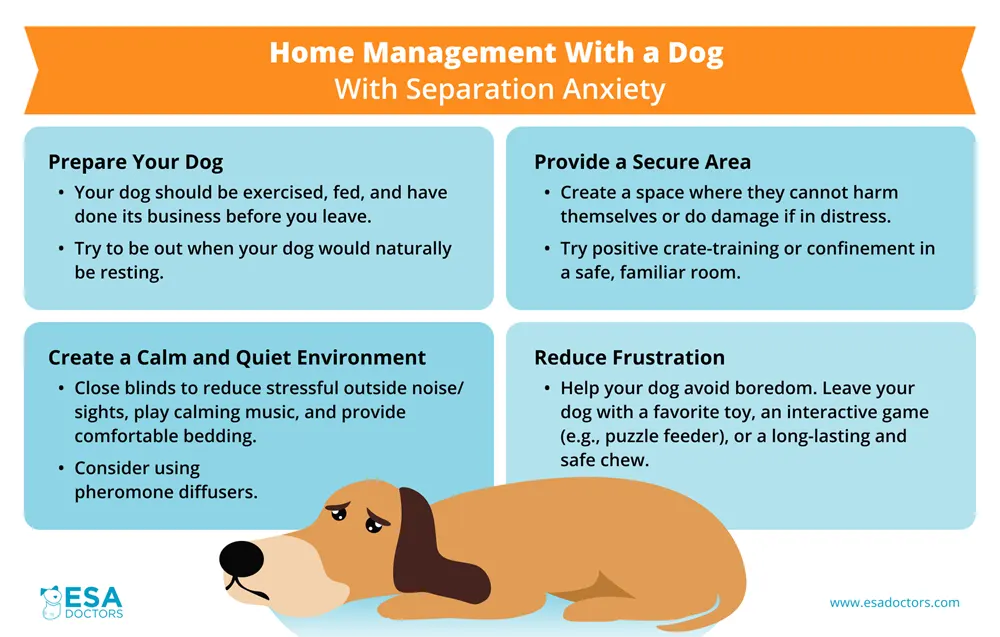
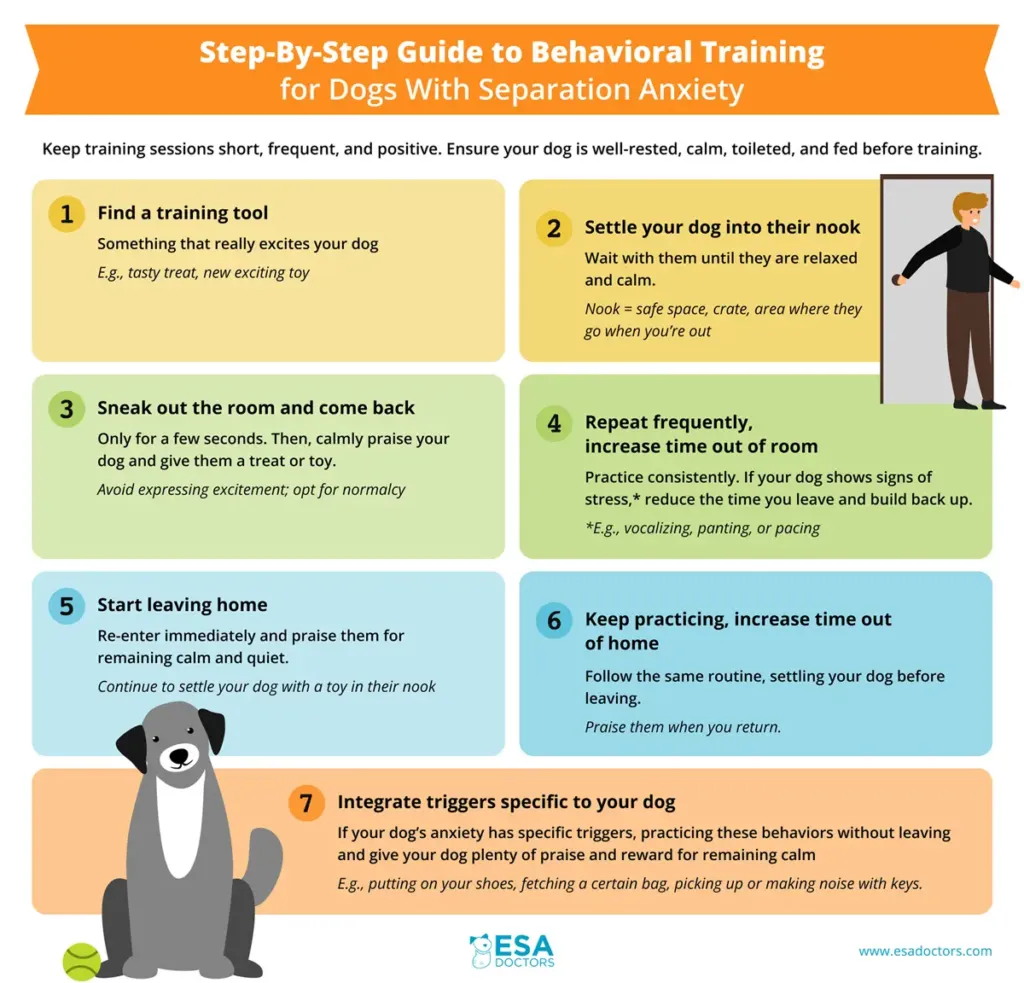

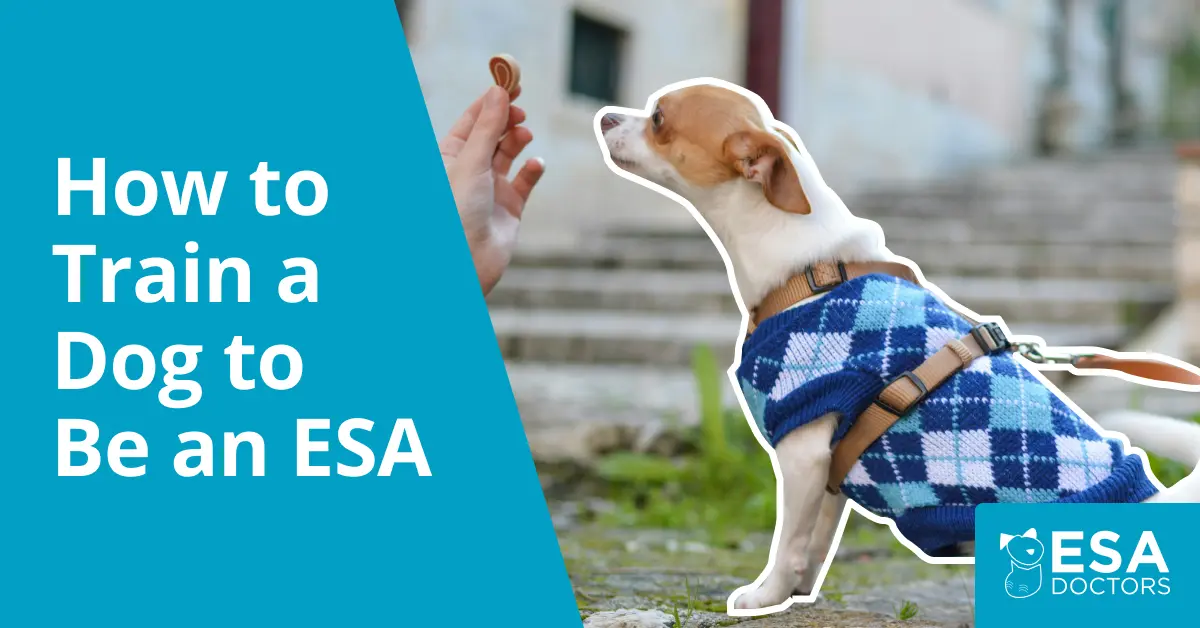
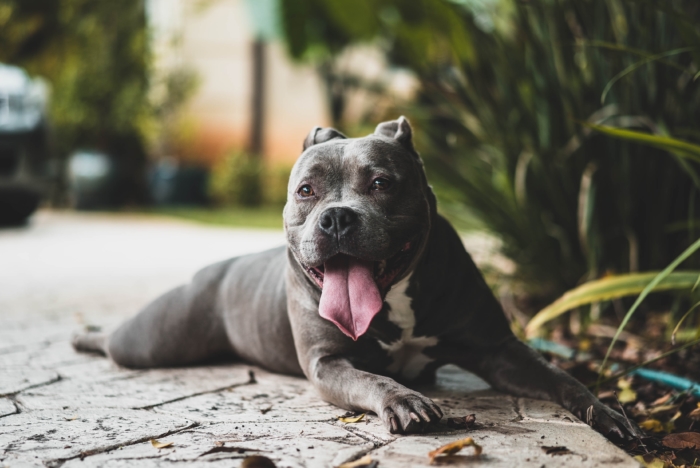
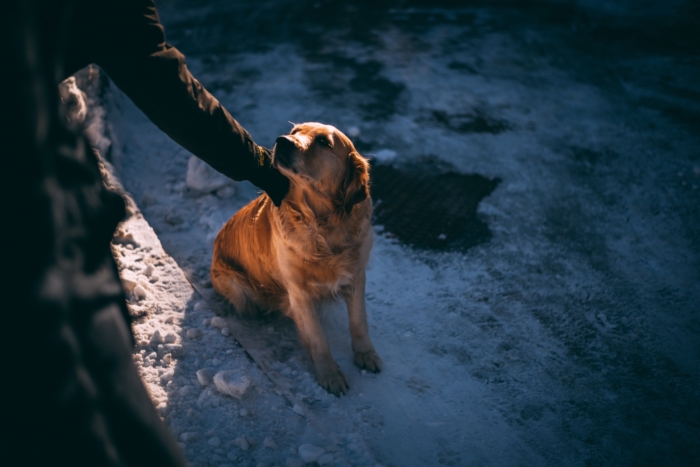
Leave a Comment